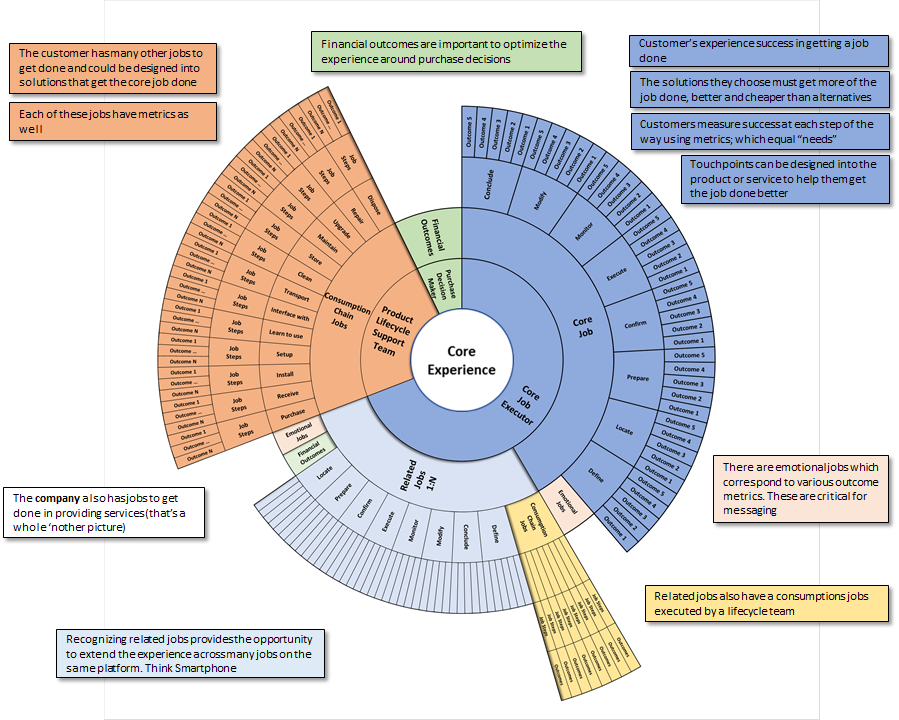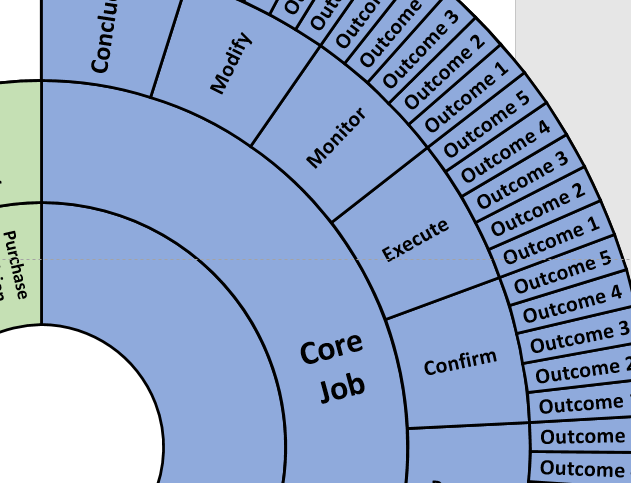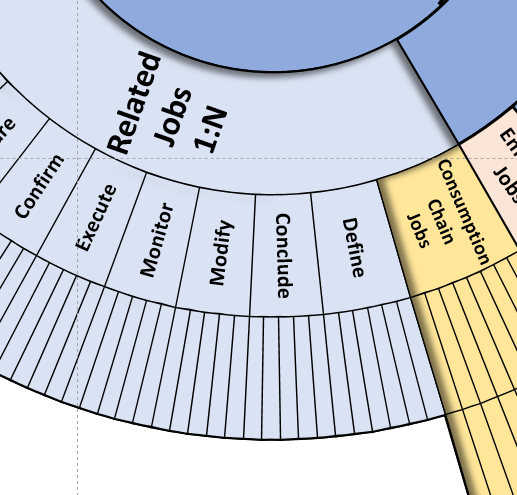Hypothesis: A single functional corporate group can define, control and execute successfully on the customer experience
I graduated college with a degree in Economics. It was a quite awhile ago, so about the only thing I remember well is the term ceteris paribus — or “all things being equal.” It was quite the handy phrase because in economic theory, it was impossible to predict anything with all of the moving parts that influence an outcome.
“In this scenario, demand should rise…all things being equal”
I’ve just showed you why the opinion of economists isn’t worth the cost of it’s digital footprint (or for the kids out there, “the paper it’s written on”).
I see this thinking quite often in a few places. First, process transformation typically has local focus. In other words, we have a difficult time finding sponsors that have broad enough authority to take a critical look at the entire end-to-end. As a result, we find local optimization that tends to sub-optimize the end-to-end process (which I’ve written about). If we could get access to the E2E, modeling would be a lot of work, but it would be doable. We have good approaches for this.
Second, we see functional groups, whether it be marketing or customer service, trying to optimize customer experience within their limited domains. The difference here is that it’s not just about process — which we can see. The customer experience is made from potentially thousands of interactions and metrics that the vast majority of companies just can’t — or refuse to — see. The main reason is because it’s the customer’s metrics — or needs — that are important. And we can’t agree upon what a need is.
In this single slice from a multi-layered look at a customer’s expected outcomes, customers measure experience at a very granular level. The picture believe does not do the complexity and hierarchy justice, either.
When trying to get even a simple job done (like decorating a family room), marketing barely has control over one sliver, and while they may try to reach into the domain of customer service, they can’t really see what needs to be measured.

Marketing as an Experience Driver
Marketing is typically full of the type of people that like to think they can create a great customer experience. But the reality is that their job is to promote brand awareness and drive potential purchasers down the funnel. Quite often, they are financially motivated to drive a certain volume of leads into the funnel; whether the sales organization values those leads or not.
Even if they understand the buyers journey, the data they have available to promote a great customer experience doesn’t come close to all of the necessary inputs from customers…

Service as an Experience Driver
Some try to create great customer experience through their customer service, or support operations. While these are important life-cycle stages in using a product or service, at the end of the day the fact that they need your help means they are struggling. And more importantly, they are struggling to get their core job done.

Getting the Core Job Done as an Experience Driver
In a perfect world, I would decide to decorate my family room, blink, and it would be done…perfectly. Unfortunately, the solutions we require to get this done are either expensive, inconvenient to use, or hard to find. With all of the marketing we must interface with every day, you’d think someone would be able to reconcile their features with my desired outcomes. That’s nearly impossible to do if they don’t understand my desired outcomes first.

What tends to happen is that is that product developers come up with ideas, build something, and then search for a market. To do the latter, we then see marketing and sales trying to generate purchase demand with messaging that doesn’t understand my core job. As a result, they leave it up to me to figure out what they’re talking about, and deflecting messaging that come at the wrong time.
Once I actually make a purchase, the onslaught seems to continue, with a total lack of understanding of my life-stage, and how I measure the experience of dealing with the various interactions that are inevitable…especially when you failed to understand my core job in a measurable way in the first place. Outcomes matter!
Most solutions only seem to get 1 step out of the 8–20 steps of a core job done well. When a competitor that gets another step done begins to get your step done, they just improved my overall experience and I will probably switch.
Related Jobs as an Experience Driver
But even when you are able to get all or most of the steps done better than your competition, there is a potential threat to that seemingly ideal experience. That threat comes from related jobs.

A pretty good example of this is the smartphone. Now, let’s be perfectly clear, Steve Jobs did not follow Jobs Theory (no pun intended) and certainly didn’t practice Outcome-driven Innovation. Nor did he write a job story, or interview a couple of customers of cassette tapes to figure out why they switched to a smartphone — because it hadn’t been invented yet! But whatever model he did use, the iPhone took into consideration the many things we are trying to get done throughout the day — personal and business — and especially in the context of being on the go.
Strategyn has written about the job of listening to music numerous times. The focus of this has been on getting more steps done, better. As we progressed from Vinyl all the way through iPods, each iteration of the delivery platform got different steps done better than the last. If we take that to the Smartphone, we began to see more jobs getting done better, not just steps.
Strategyn has always said that there research shows that one of the innovation paths is to get more customer jobs done on a single platform. But to do this with predictability requires that you take the entire experience into consideration. The benefits are clear, while you may not win the largest marketing share for phones, the additional jobs allow a premium — because the experience is better than the alternatives

Would you say that your experience with an iPhone, or any smartphone justifies paying so much more for a phone? I’ve often considered going back to a flip phone because it fit in my hand better. But, it sucks at everything else that I’ve come to value these days!
Bottom Line
It’s pretty clear to me that no single area of an organization has sufficient detailed knowledge into the interactions (physical or otherwise) that a customer applies metrics to while evaluating an experience. In fact, customers don’t measure experience at individual interactions at all; but only after they get a job done.
The fundamentally huge challenge we all have, even those that understand this, is actually embedding this into the entire organization — from product development to customer support. While the model has been built for measuring customer success, and thereby an understanding of how experience is measured, there is still work to do. How will all the pieces fit together into a cohesive and integrated approach — with enough granularity to be relevant, and not so much to be a burden?
Can we create a pull-based experience that effectively side-lines current thinking?
It’s time to put your coveralls on again. We’ve got some work to do; because all things are never equal!




Does net present value of customer at each interaction unify company around ‘best’ decision per contact?
Keying off economic discussion, the future success of achieving optimum value per contact should be apparent company and affiliate-wide.
If a company really wants to disrupt and differentiate, pay each stakeholder based on their performance of achieving increased value.
This is the Uber model and Amazon’s model and Apple and Facebook’s model…
Visualize, monetize, analyze, optimize.
There’s a formula in Customer Worthy book that aligns with article and may be useful.